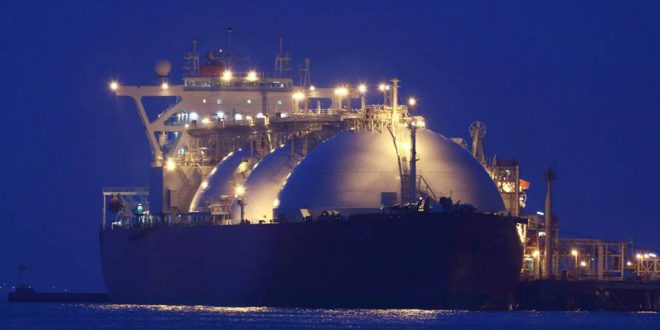The unprecedented surge in spot LNG prices has taken Indian buyers by surprise and forced importers to stay away from spot purchases, which would potentially lead to lower throughput at some terminals, reduce gas-based power generation as well as slow consumption in other industrial sectors.
With spot LNG prices hitting record highs, analysts and industry officials said throughput at some terminals could fall by about 10%-12% in the first quarter of 2021 due to a slowdown in spot arrivals, although LNG cargoes based on term contracts were expected to flow in as per schedule.
“The quick change in the market dynamics has taken Indian LNG buyers by surprise. A lot of Indian buyers can’t afford to pay these prices. We will see demand destruction across various sectors,” said a senior official at a leading Indian LNG firm. “Whatever little availability is there in the global spot market, China is taking those cargoes.”
JKM, the benchmark for Asian spot LNG prices, surged to an all-time high at $21.453/MMBtu on Jan. 8 amid record low temperatures in North Asia, high freight rates, congestion in the Panama Canal and supply disruptions.
The West India Marker (WIM), the benchmark for spot LNG prices delivered to India, hit an all-time high at $17.925/MMBtu on Jan. 8, S&P Global Platts data showed.
A leading Indian LNG importer said that the country could see LNG imports dropping to 5.5-5.7 million mt in Q1 2021, compared with 6.5 million mt in Q4 2020.
Gas-based power generation
Indian re-gasified LNG based power generation is likely to drop in India in Q1 due to record high LNG prices, sources said.
With WIM surging close to $18/MMBtu for February-delivery cargo, the spark spread for the power sector is expected to remain in the negative territory.
Even after accounting for the maximum traded electricity price on Indian Energy Exchange in February 2020 at Indian Rupee 5/KWh, the spark spread would be at about negative Indian Rupee 6.50/KWh for February with the current spot LNG prices in India.
“Gas based power generation is economical for us if WIM is at $4.00/MMBtu or the delivered price of gas at the burner tip is no more than $5.50/MMBtu,” a major Indian utility said.
LNG demand in India is also expected to take hit from other sectors such as city gas distribution and industrial customers, with end-users switching to other alternative fuels such as fuel oil, LPG and naphtha.
“Refineries in India which have dual fuel power generation capabilities have already started switching from LNG January onwards. Reliance did not buy any LNG cargoes for January and is probably consuming a third of the gas volumes which they did earlier in 2020,” an Indian end-user said.
Most of the recent tenders issued by Indian LNG importers seeking December-February cargoes, such as GSPC, Petronet LNG, IOC and Reliance, have been not awarded due to lack of spot cargo availability or higher offers. IOC was last heard to have procured a Feb. 21 DES West India cargo at high $13.00/MMBtu level on Jan. 4 2021.
“LNG importers are curtailing supply for RLNG now since they haven’t been able to secure supply due to high prices and the tight market. Most of the supply is coming from the existing inventory at the LNG terminals,” an Indian end-user said.
Changing dynamics
Jeff Moore, manager for LNG analytics at Platts said that given the unprecedented spot prices the market is seeing right now, it’s no surprise that Indian end-users would turn down their spot supplies, especially compared to Q1 last year.
“We are basically in the exact opposite situation now with essentially zero spot supply available which is leading to historic LNG prices compared to contract prices based on oil, landed LNG prices from the US or European reloaded prices,” Moore said.
The steep rise in spot prices have ensured lower offtake of LNG in India and many prompt cargo tenders have not been awarded, while shipping slots have gone unutilized, traders said.
“What we saw in January and February of 2020 where coal-to-gas switching contributed to incremental demand will definitely not happen and there is a possibility for negative growth in LNG volumes for January and February 2021,” said a senior official at an international trading firm based in India.
“Some sort of rationing of RLNG has also happened since early-December 2020 and that continues into January 2021 as well. Fertilizer and other industrial players who depend on LNG will have an impact on their production as it’s not easy to switch to an alternative fuel,” the official added.
Platts Analytics expects the rise in gas prices could see increased coal import demand and potential gas-to-coal switching from the non-power sector, especially the ceramics and industrial sectors in the southern regions that are reliant on gas consumption.
“We have also seen a recovery in thermal coal railed to the non-power sector. It has returned to 2019 levels,” said Matthew Boyle, senior coal analyst at Platts Analytics.

 Iran Energy News Oil, Gas, Petrochemical and Energy Field Specialized Channel
Iran Energy News Oil, Gas, Petrochemical and Energy Field Specialized Channel



